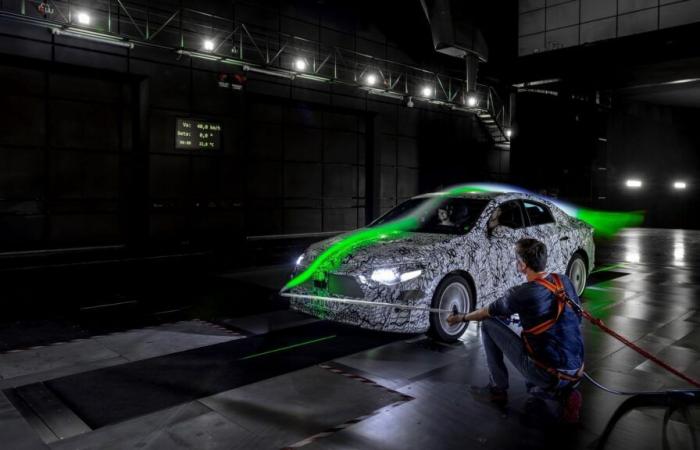“Best in class”, a statement that manufacturers love to describe their new products. And it could not be more suited to the new Mercedes CLA which is aiming for both electric and thermal efficiency records. Quite a gamble, especially since multi-energy platforms are rarely those that produce the best results in each category. However, with the MMA technical base, Mercedes intends to overtake both BMW and Tesla in the segment of “compact” electric sedans (a notion that has become very relative today), but also to BMW and Audi in B2B with customers who are still sensitive to thermal sedans. Because it is indeed a real thermal. This CLA does not currently have the possibility of combining the petrol engine that we are going to detail and a charging socket. The small 48V motor, however, allows you to drive a few meters on electric power up to 100 km/h.
A brand new engine
The Mercedes CLA starts again with a transverse four-cylinder engine architecture but this is the only point in common with the previous generation. Mercedes went with an ultra-compact supercharged 1.5 block with, a first in the “A” range, an exhaust manifold integrated into the cylinder head. A solution now widespread and proven for a long time by Volkswagen which allows, in addition to saving space and weight, to better cool the exhaust gases which then end up in the EGR valve circuit.
This four-cylinder is associated with an entirely new engine/box assembly and also compacted as much as possible. The eight-speed dual-clutch transmission is new on the CLA and is combined with a 27 hp electromotor which can recover energy when braking thanks to a charging power of up to 33 hp to fill the battery with 1 .3 kWh located under the driver's seat. Ideal for mass distribution. Three power levels are already on the program for this mild hybrid version: 135, 163 and 190 hp. Mercedes claims that it is the most efficient 1500 cubic centimeter engine in terms of power developed. But others have done better on three cylinders: Ford Fiesta ST (200 hp) and especially Toyota Yaris GR (272 hp). More powerful variants of the CLA obviously cannot be ruled out on the same basis of this 1.5 turbo four-cylinder.
An electric car that charges quickly and goes far
The electric version of the CLA will be available in two variants at launch with propulsion (again, a first for the CLA!) of 272 hp thanks to a permanent magnet rear motor. Mercedes, unlike BMW, did not choose the wound rotor, probably for reasons of production and efficiency constraints. But the German manufacturer still chose to use silicon carbide, this semiconductor becoming more and more popular among automobile manufacturers since it improves the efficiency of power electronics. And therefore the autonomy and the charge of the vehicle which, on the CLA, will be high thanks to the 800V network since Mercedes announces that the maximum power is 300 kW.
How diamonds could transform the future of electric cars
The 4Matic version adds a 109 hp motor on the front axle which is activated only in the event of poor traction. It is therefore not systematically active. Always with the aim, obviously, of maintaining the autonomy of the batteries which will have several capacities: 58 kWh and 85 kWh but with a particularity. EIndeed, the smallest battery adopts a traditional LFP chemistry to lower costs when the second will be on an NMC chemistry with a standard graphite electrode but doped with silicon oxide. The difference in density between the two is also significant: 450 Wh/liter for the LFP battery, and 680 Wh/liter for the 85 kWh which would allow you to travel 750 km on a charge in the approval cycle.






